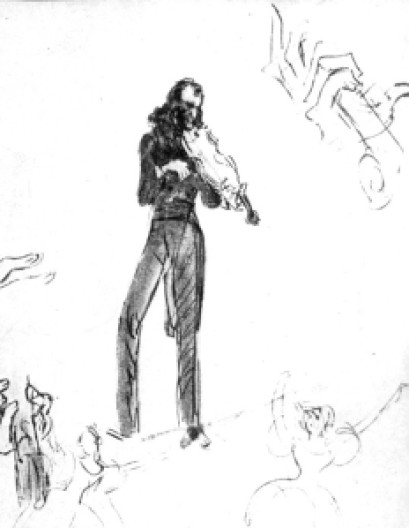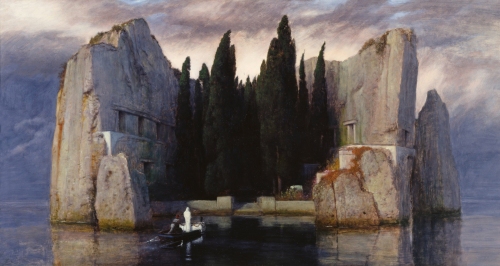Since the 1950s scientists have increasingly agreed that Paganini was probably a victim of Marfan syndrome—although beneficiary seems a more appropriate word than victim.
The typical characteristics of this pathological condition—a tall, thin body and particularly long, thin arms and hands—are perfectly in keeping with the virtuoso’s somatic characteristics, noted by all who described him and confirmed by the concert sketch by the writer and painter Johann Peter Lyser, the only artist known to have reproduced the violinist’s exact physiology (above; click to enlarge).
There can be no doubt that Paganini’s abnormal ligaments—together, of course, with his extraordinary musical talent—were a definite advantage in his chosen career.
This according to “Nicolò Paganini (1782–1840)” by G. Sperati and D. Felisati (Acta Otorhinolaryngologica Italica XXV/2 [April 2005] pp. 125–128; RILM Abstracts of Music Literature 2005-51589).
Today is Paganini’s 240th birthday! Below, Jascha Heifetz plays the composer’s Caprice, op. 1, no. 24.













